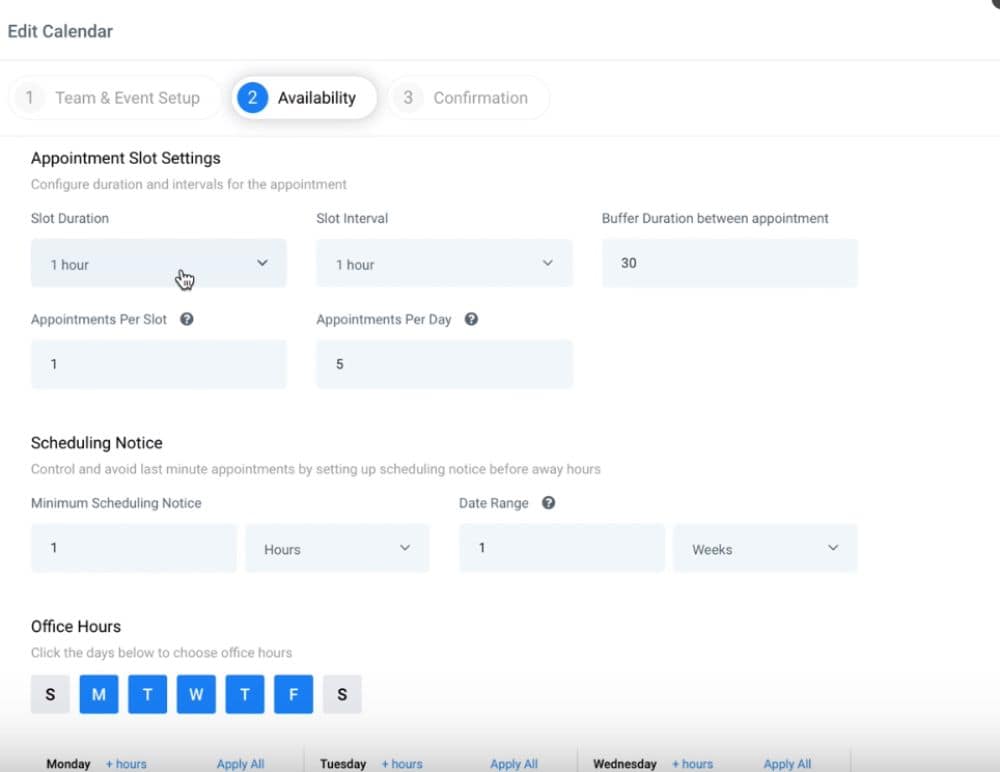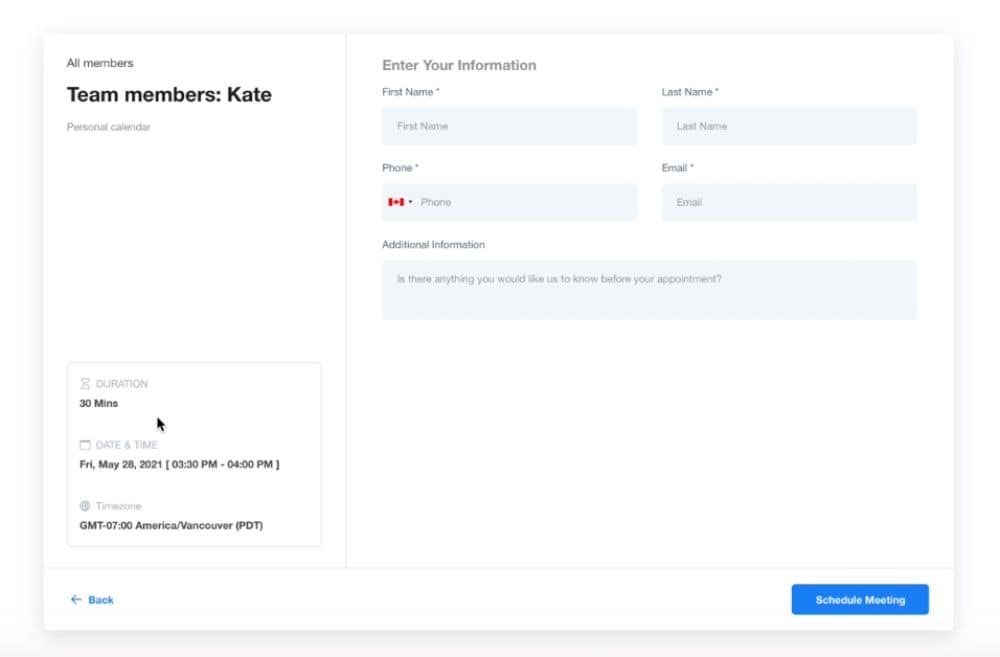Looking to set up your calendar on GoHighLevel? Don’t worry, we’ve got you covered with our amazing guide, Calendar Setup 101 for GoHighLevel. Get ready for some serious customization and awesome features. This is the ultimate resource you don’t want to miss. Dive into the best GoHighLevel tutorial now and level up your calendar game!

Calendar Setup 101 for GoHighLevel
Part 1: Creating and Managing Calendars
Step 1: Navigate to Calendars
- Select + New Calendar

Step 2: Calendar Team & Event Setup
The appointment distribution preference for services offered by group calendars can be selected, but this option does not apply to individual calendars. This setting determines how appointments for services will be allocated among members of the group.
- Optimize for availability – Each member of the team can have their user, priority level, and location chosen. Availability will be determined by the priority level assigned to each member.
- Optimize for Equal Distribution – Each member of the group can choose a user and indicate their location. Appointments are scheduled in order, starting with the top user on the list and moving down.
Calendar – Description on Calendar
- Calendar name – Name for your calendar
- Description – Written representation for event
- Calendar URL – Path Name for your calendar link
- Appointment title – Name for appointment (add title after {{}})
- Event color – Color the event will appear in
- Save & Continue.

Step 3: Managing Availability
Customize Appointment Slot Settings
- The slot duration refers to the length of time allocated for each appointment, such as 30 minutes or 1 hour.
- The slot interval refers to the frequency at which appointment availability is offered.
- Buffer Duration Between Appointment – This setting determines the minimum time gap between appointments to allow for a buffer. For instance, if appointments are set for 30 minutes and a 15-minute buffer is specified, after a booking is made for 10:00am-10:30am, a 15-minute buffer will automatically be created and the next appointment can be scheduled for 10:45am.
- Appointments Per Slot –This feature establishes a maximum limit on the number of appointments a user can book within a specific time slot. If the number of appointments exceeds this limit, the system will either proceed to the next user in the round-robin queue or indicate that the slot is unavailable for booking.
- Appointments Per Day – The maximum number of appointments allowed per day on this calendar is specified.
Choose Scheduling Notice
- Minimum Scheduling Notice – Days to be notified before appointment
- Date Range – Days events can be scheduled in the next entered days
Set Office Hours
- Select days – Blue = Days selected, Gray = Unselected Days
- Select + Hours to add additional hours to specific days
- Select Apply All to copy hours for the rest of the days selected
Save & Continue
NOTE: When there is a difference in timezones between the company and the user, it is necessary to adjust the calendar availability to match the user’s timezone rather than the company’s timezone. For example, if a user is available from 8am-5pm PST and the company is located in EST, the calendar availability should be set to 11am-8pm EST in order to show the accurate availability.

Step 4: Form Settings
- Custom Form – In addition to the default form, which includes fields for first name, last name, email, and phone number, there is also the option to create a custom form for the booking widget.
- Use Sticky Contact – The system monitors the travel of contacts and stores any information they have shared.
- Use Stripe Payment –To use this feature, your account must have Stripe integration. You will be able to choose the amount, currency type, and a message for the charge description.
Notification & Additional Options
- Let calendar auto confirm my appointment – Auto confirm an open sport on your calendar
- Send appointment alert emails to the assigned group member – It should be noted that if this option is selected, there may be situations where the emails may give the impression that the appointment was not confirmed automatically.
- Allow google calendar to send invitation or update emails to attendees – Google has the capability to send notifications to attendees regarding appointments.
- Allow rescheduling – Please let us know if you would like to reschedule.
- Allow cancellation – There is an option available for the client to cancel.
- Additional notes – The link provided allows for rescheduling or cancellation.
- Pixel ID – It will be included in your schedule.
Form Submissions
- Form submit Redirect URL –If you have a confirmation page, visitors can proceed to the next level of the funnel.
- Customize Thank You Message – Please enter a different message in the box if you prefer.
- Click the “Complete” button to confirm and save your settings.
Step 5: View Your Calendar
- The Calendar settings will show all the calendars that are saved in the account.
- Click on the ellipsis to access the options.
- Please make edits to the calendar.
- The calendar service can be disabled and enabled again as needed.
- Please remove the calendar from the account.
Part 2: Using the Calendar
Step 1: Access Your Calendars
- Users are able to access their calendars directly from the Dashboard menu in order to visually view their appointments and blocked off time.

Step 2: Filter The Display
- To switch between multiple calendars, utilize the dropdown menu labeled “My Calendar”.
- In the “All” section, you have the option to filter your calendar and choose to display appointments, blocked time, or both.
- In the “Weekly” section, the calendar display can be adjusted to show monthly, weekly, or daily views.
- To access the Event Guide or legend, click on the ? icon. It will explain the different color codes used for appointments/events in your calendars.

FAQ
What Is the GoHighLevel Calendar for?
The GoHighLevel calendar allows users to conveniently schedule and book appointments for various events. Additionally, the calendar can be seamlessly integrated into web pages, enabling automatic bookings.
How Do I Add a Calendar to GoHighLevel?
To add a calendar to GoHighLevel, the first step is to create a group consisting of the team members responsible for conducting appointments. After creating the group, you can then add multiple calendars to it.
How Do I Sync My Google Calendar to GoHighLevel?
To sync your Google calendar with GoHighLevel, you need to integrate the app with the GoHighLevel platform. Once the integration is complete, you can enable the “Sync” function, allowing the two systems to automatically update and synchronize.



